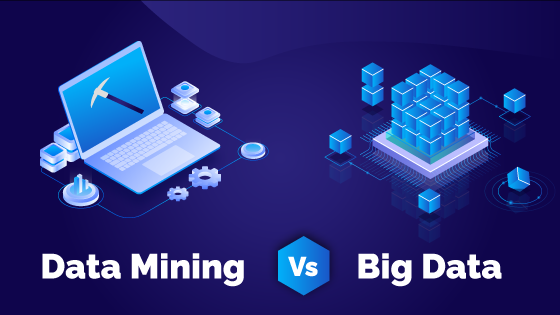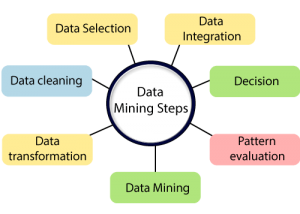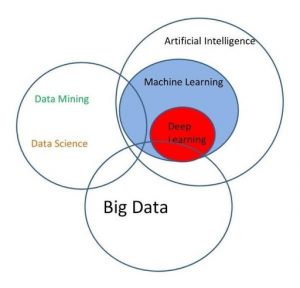Want to learn how data mining and big data are different from each other? Here’s the detailed guide on the difference between big data and data mining i.e. data mining vs. big data.
Big Data and Data Mining are two different things and serve different purposes. Even though they both use datasets for handling data to serve diverse purposes, the scope of operations is different from one another.
Big Data refers to the collection of humongous datasets, such as the datasets within excel sheets, that are too large for easy handling. On the other hand, data mining refers to the analysis of large data chunks for extracting relevant and useful information.
To help you get rid of the confusion, this article intends to help you out with the ideal differences between them on priority. Stay tuned till the end!
Importance of Big Data and Data Mining
Before you get into the ocean of differences, it is important that you get a clear insight into how these aspects are important in their diverse fields. And this section is dedicated to the same!
Big Data assists businesses to drive profitability in terms of financial aspects. The tools used for the purpose of implementing big data analytics help derive meaningful insights for making better business decisions. These insights or information can also be used for other beneficial purposes of the organisation.
Data Mining is accountable for being important for diverse reasons. The most evident use of it is to understand the relevance of the obtained information and use it to assess the changes every time a new flow of data comes in. Hence, this enables the use and integration of valuable data and data mining solutions for diverse industries such as healthcare, financial market analysis, and others.
Difference Between Data Mining and Big Data
Both of them are two different concepts and serve the businesses in their own specific ways. Data mining is the concept that takes measures for digging into the data and analyzing the relationship and pattern of data changes. Hence, it is further used by organizations for predicting algorithms of business hike or drop.
Moreover, data mining is also used for different aspects, such as for Linear Regression used upon AI. On the other hand, the main purpose of big data utilization is the velocity, security, and source of the large data chunk at its disposal.
As of practical evidence are concerned, it is said that data mining is in no way dependent upon big data. It is because data mining can be executed over any amount of data. But it is preferred that you data mine, only with a large amount of data. It is because you will get better test cases and more accurate results.
On the other hand, you can say that big data is literally dependent upon data mining. It is because, without data mining, the purpose of that particular set of data will be unknown to Big Data. Hence, the data will be of no use for the owners after feeding it onto big data if there is no analysis done on it.
Differences in Form of Table for your Head-to-Head Understanding
Now when you have understood the basic differences between big data and data mining, it’s time to get ahead to understand the differences in a detailed manner. Here are the differences between data mining and big data in the form of head to head differences & a comparison table:
| Data Mining | Big Data |
| Data mining mostly focuses upon deriving a lot of details associated with the data | Big Data focuses mostly upon deriving the relationships in between the data. |
| It is one of the evident processes that lie within the functionality pipelines of Big Data. It means that Big Data cannot operate without data mining applications. | It is the technique that intends to collect, process, and maintain the huge information from the data analysis and determine the relationship between them. |
| Data Mining is all about Knowledge Discovery of any particular set of data and derives the close view. | It is all about extracting valuable & vital information from a huge chunk of data. It is the process that helps individuals track and discover the trend sets associated with complex data. It is an overall data view! |
| It expresses what the data has in it for the businesses and enterprises to boom. | It expresses why the data is important for the business to leverage upon it. |
| It is capable of handling relational databases, dimensional databases, and structured database | It is ideal for handling unstructured databases, semi-structured databases, and structured databases. |
| Data mining focuses on prediction analysis, statistical analysis, business factor discoveries over small-scale aspects. | Big Data mainly focuses upon data analysis, prediction-focused analysis, and business factor discoveries on a high-end scale. |
| Use data mining only when you are in need of strategic decision-making. | You can make use of big data for predictive measures & decisions. Not just that, but you can also keep track of the progressive implementations through built-in dashboards. |
| Data mining is the sub-set of Big Data. Hence, it is one of the tools of Big Data. | Big Data is the superset of Data Mining. |
| It is for creating business insights to plan the next operational move. | It is used mostly for attaining customer satisfaction and other business purposes. |
Frequently Asked Questions (FAQs)
Now it’s time to find the answers to some of the frequently asked questions that a data aspirant must know and here you go!
- What is the major focus of data mining?
Data mining serves the purpose of cleaning the raw data, finding the hidden patterns, creating data models, and then testing them.
- Are there any issues with data mining?
Some of the probable issues with data mining are noisy & incomplete data, security challenges, social challenges, scalability problems, lack of background knowledge, and others. With strategic mining inclusions, these drawbacks can be attended to and prevented!
- What are the three major principles associated with big data?
The three major principles of big data are Volume, Variety, and Velocity! These aspects with respect to data define the entire concept of big data.
- What is the language used in Big Data?
Python is the language used in big data. It is the most preferable language amongst the top data scientists.
Bottom Line
So, these are the differences and comparison attributes that give a clear verdict into how data plays a crucial role in helping businesses and other services thrive. You just need to keep in mind that both data mining and big data are crucial for enterprise operations. And you cannot skip on one to experience massive productivity.
If you’re aspiring to enhance your journey with data science, you need to gain more knowledge of the terms data mining and big data. Start with this and get ahead to learn more to take your career one level up.
- Top 45 Fresher Java Interview Questions - March 9, 2023
- 25 Free Practice Questions – GCP Certified Professional Cloud Architect - December 3, 2021
- 30 Free Questions – Google Cloud Certified Digital Leader Certification Exam - November 24, 2021
- 4 Types of Google Cloud Support Options for You - November 23, 2021
- APACHE STORM (2.2.0) – A Complete Guide - November 22, 2021
- Data Mining Vs Big Data – Find out the Best Differences - November 18, 2021
- Understanding MapReduce in Hadoop – Know how to get started - November 15, 2021
- What is Data Visualization? - October 22, 2021





